Rockland's creative economy spurs a renaissance
The new Center for Maine Contemporary Art — housed in a building in itself an example of contemporary architecture — drew nearly 10,000 visitors in its first three months in Rockland.
That's well on its way to 2017 projections of 35,000 to 50,000, and surpasses best-year visitation of 9,000 people in 2012 at the seasonal former site in Rockport. The new site opened June 26.
“There's been a dramatic and real change,” says Suzette McAvoy, executive director since 2010. “In Rockport, it was largely the art crowd — artists and arts supporters — who knew about us, not the general public. We were a destination. At receptions, 200, 250 people showed up, then that trickled down to very little in-between.”
Things are different in Rockland.
“We've seen many more people. We have the arts community, but we also have the general public coming in — tourists, people from cruise ships and bus tours. We're part of First Fridays, and that's a whole range of people. Now we're seeing the fall tourist crowd, as well as school groups,” McAvoy says. “We just had a group from the Maine College of Art, we have an elementary school group coming from Boothbay Harbor and we're working on activities with the Rockland school district. So we're seeing a much more diverse audience.”
Rockland move key to growth
A non-collecting exhibition and education organization, CMCA was founded in 1952, in Rockport, as Maine Coast Artists, without a permanent space. Early exhibition venues included the Rockport town office, a barn, storage loft and former schoolhouse.
In 1967, CMCA purchased a 19th century livery stable-turned-firehouse in Rockport for $1,650. It spent the next half-century there, offering exhibition space and outreach programs.
But as contemporary art changed — expanding in scale and media — it became clear the space was inadequate. Weight restrictions limited the size of sculptures that could be shown. Lack of technology restricted video and multi-media works. Low ceilings with open beams and wooden “ship's knee” supports every nine feet limited painting height and width. Space was split between three floors, hampering load-in. Poor heating meant closing during the winter, limiting exhibits and outreach. Parking, visibility and foot traffic were suboptimal.
“Much as it had charm and served the organization well for decades, the contemporary arts field had changed enough that it no longer suited us,” says McAvoy.
In considering a change of venue, CMCA had to decide on location.
“We looked at different possibilities — Portland, Bangor, Camden, Brunswick,” says McAvoy. “Ultimately, we decided our roots are on the midcoast and we should stay true to our roots. We also wanted to be in a community that was embracing the arts. That was Rockland.”
The Rockland vibe
Thousands of seasonal visitors and summer residents have discovered a growing slate of cultural happenings in recent years, with the transformation of a forlorn waterfront with an influx of businesses such as MBNA, succeeded by Boston Financial Data Services. That's complemented by the growth of arts businesses. Anchored by the Farnsworth Art Museum, the scene today includes about two dozen galleries, trendy shops, restaurants, hotels, cultural festivals and movies and performances at the historic Strand Theatre.
Rockland is a cultural hub, says Farnsworth Executive Director Christopher Brownawell.
Rockland's attraction for arts and culture offerings, says Brownawell, is the confluence of factors including available real estate prime for studios, galleries, the Farnsworth and CMCA's new construction; the coastline's beauty; and an edgy dynamic created by and now attracting new businesses, which in turn collaborate on events. There are other venues that offer modern and contemporary exhibitions — including the Farnsworth's current “Pushing Boundaries,” which features artists Robert Rauschenberg, Roy Lichtenstein, Nancy Graves and Jim Dine.
CMCA is a great addition, says Brownawell.
“It's great to have CMCA here as a companion to offer additional venues for contemporary artists,” says Brownawell.
CMCA's new site — on Winter Street, off Main Street — was formerly home to an existing 1920s building. Once a garage, pool hall and print shop, the building housed four art galleries when it came to CMCA's attention.
“When this property became available, we realized we needed to make the jump,” says McAvoy. The original idea was to renovate and expand the existing building.
“But we found it was full of asbestos and were advised it would be less expensive to tear it down and start new,” she says. “Ultimately, that was a gift, because it allowed us to create a courtyard and build a purpose-built building.”
For the design, CMCA hired New York City-based architect Toshiko Mori, whose work includes a museum and gallery spaces. She also has a place on North Haven.
“I met her in the mid-1990s, when I was curator at the Farnsworth,” says McAvoy. “She was hired to do the Farnsworth's first expansion. I admired Toshiko's attention to detail and her understanding of what works best for gallery space. She has a minimalist approach, with a very clean design and non-fussy use of materials.”
The 11,500-square-foot building comprises 5,500 square feet of exhibition space in three galleries, one doubling as a lecture hall and performance space; gift shop and ArtLab classroom. A 2,200-square-foot courtyard opens onto the street. The envelope is corrugated metal and copious glass.
“Everyone can see in and have a sense of what's going on, merging inside and outside,” says McAvoy.
The building is energy-efficient and primed for technology installations. The loading dock leads straight from the street to the galleries, easing load-in. Polished cement floors and a slab foundation allow for any weight. The main gallery's open ceiling, with 16-foot wall height and 50-foot by 52-foot expanse, broaden exhibition possibilities.
The project was funded by a capital campaign to raise $5.2 million. Although $1 million remains to be raised, the campaign's overall success, says McAvoy, reflects consensus around CMCA's importance to Maine art.
“We're the longest-running independent institution dedicated to contemporary art,” she says. “We've shown hundreds of artists over the years that have gone on to be well-known. We have a solid track record.”
Future growth depends on young people
Youth engagement, says McAvoy, is key to the future.
“I think everyone is aware these days that in Maine we need to attract and retain young people to our communities,” she says. “Our organization — with contemporary programs, a forward-looking mission and now a contemporary building — is the kind of organization that attracts younger generations. So one of our goals in creating this new CMCA is to be a catalyst for creating a vibrant community that will be attractive to the next generation.”
Toward that end, CMCA will now be able to do more with schools and community, including participation in art walks and festivals, and expansion of school outreach and studio programs and tours for people of all ages. In Rockport, that happened on a seasonal budget of just $350,000. Now, year-round budget projections are at perhaps $550,000.
“Design New England recently called us as frugal and timeless as a Maine lobster boat,” McAvoy laughs. “We liked that.”
McAvoy projects economic impact of the new CMCA to be nearly $35 million in 2017, through local and state taxes, fee revenues; collateral impacts of visitors drawn to CMCA then enjoying nearby amenities — restaurants, hotels, shops; and CMCA's contracts with services — cleaners, printers, transportation services and so on.
“You throw a pebble into a pond and the ripple it makes across the state economy is significant,” McAvoy says. “I think that's under-recognized, just how great a role all the arts play in the state's economy. When you consider that 780 artists applied to be in our biennial, that's a big chunk of people who identify in this particular industry. And that's just the people who applied. That's not all the artists and craftsmen.”
CMCA is looking forward to its first winter in Rockland to see how greater visibility and walk-in accessibility meld with programming ideas. For staffers, the move is a boon.
“Our offices have glass walls, and everyone can see us and we can see them,” says McAvoy. “We love that because we see people coming in — and see them going out with a smiles on their faces. It's very gratifying.”
Read more
Tallest building in Rockland a hotel with nautical flair
Development in Rockland's downtown heats up
Rockland represents Maine in national Main Streets celebration
Rockland's Rock City makes jump to employee ownership
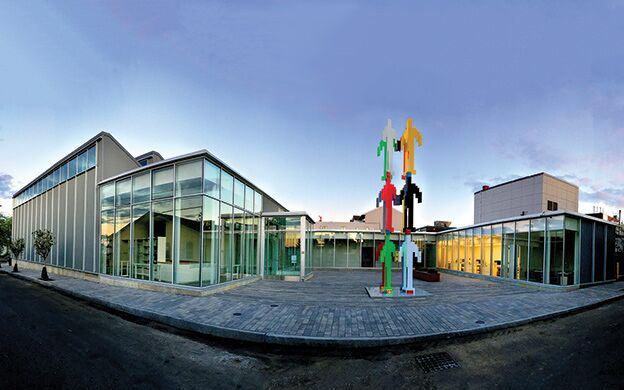
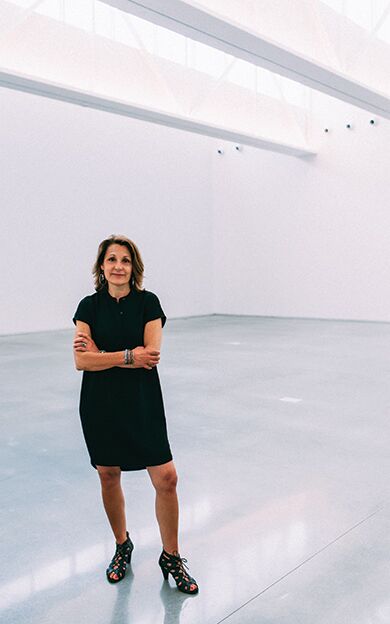
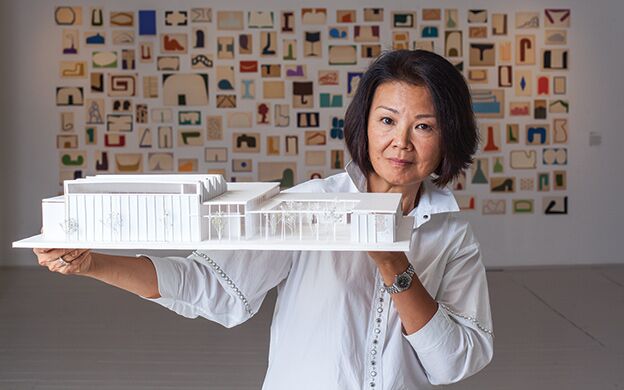


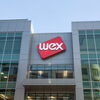
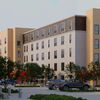
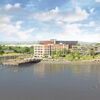
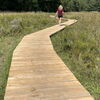





Comments